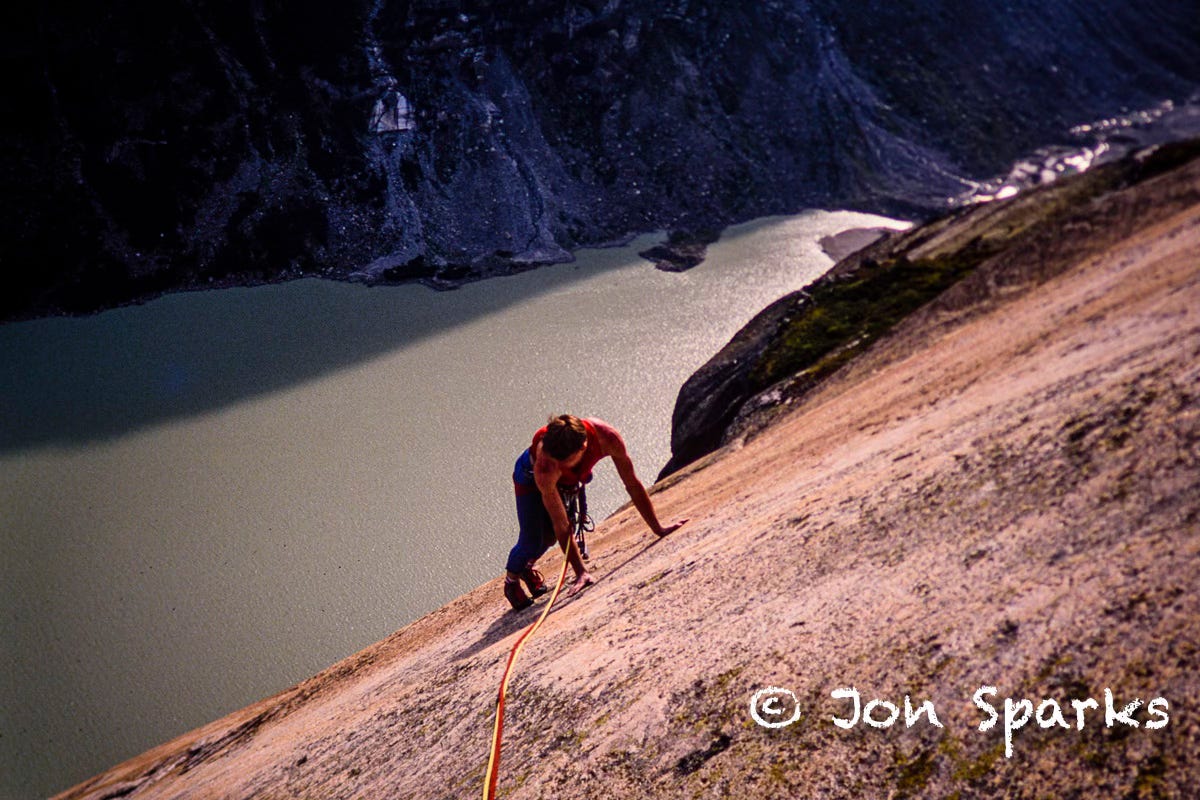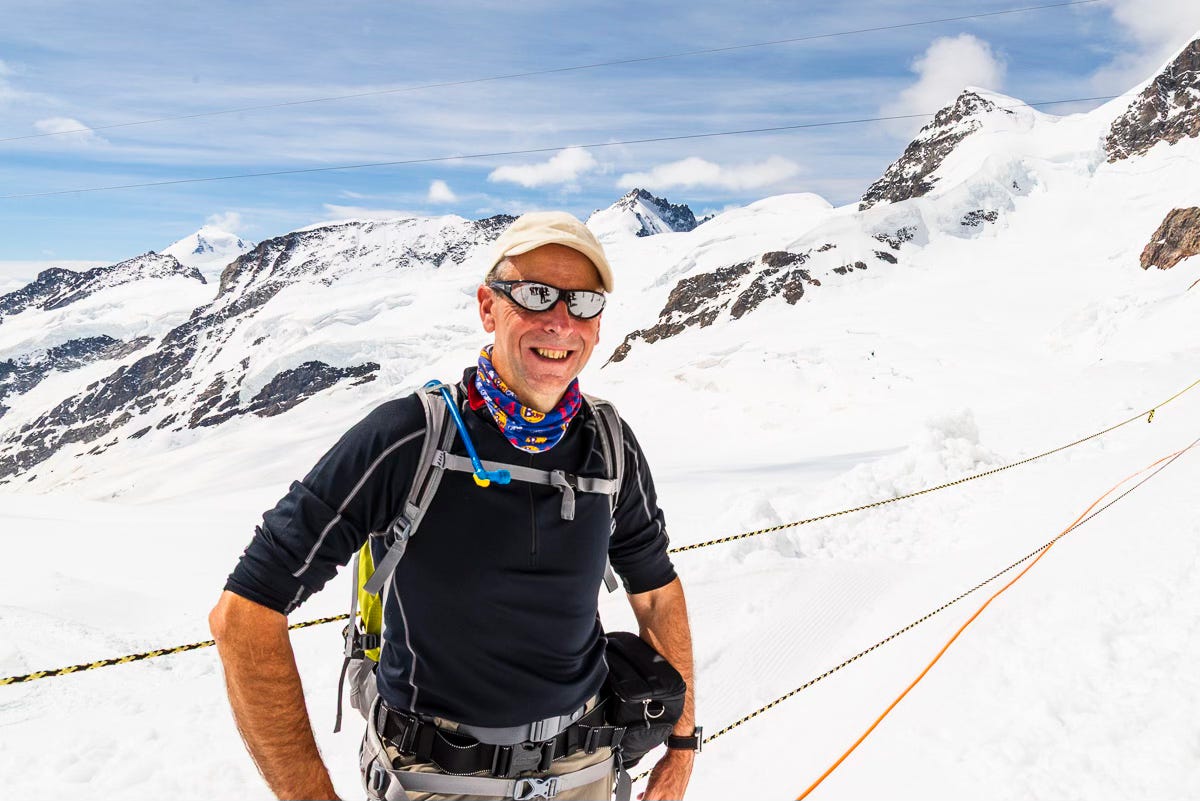Captain's Log—Supplemental
A bit more on cameras, for completeness—and for the real afficionados
But first, a couple of quick reminders.
1: If you sign up/upgrade as an annual paid subscriber to my Substack you’ll receive a free paperback of Three Kinds of North (or any other book from the series if you prefer). I‘ll need an address, of course, but it doesn’t have to be your private residence. I’m also thinking about other extras to offer paying subscribers—who fancies a map of the Known Lands?
2: My partner and I have just signed up for the Tour de 4 cycle event on the 7th of September and based around Glasgow. This is being promoted by Sir Chris Hoy as a way to challenge perceptions around living with cancer and in particular Stage 4. Find out more at my GoFundMe page. As an alternative, drop me a few quid via the button below and I’ll add them to the pot.
Now, on with the motley…

As a professional I needed the right kit for the job, and that’s never been a trivial consideration. Over the years I must have spent thousands on cameras, lenses, and all the other tools of the trade. Despite writing regularly about photography both in books (notable all those Expanded Guides) I wasn’t lavished with free kit.
Just to clarify about the Guides—because I know from conversations in the past that people have assumed I got to keep the cameras I’d worked on—it never worked like that. The publishers would buy the camera and send it to me, and when my work was done I’d return it to them for resale. Or, on a couple of occasions, when the camera seemed to be just what I needed, I’d buy it from them at a price appropriate to a very-nearly-new camera.
Pretty much the only free photo-related gear I ever got was a couple of camera bags/backpacks. Otherwise everything I used was either on loan for a strictly limited time or, more generally, purchased by me in the general marketplace.

By the way, I know a number of people who are or have been regular reviewers in the outdoor industry, like fellow Substacker Chris Townsend, who could tell you with real authority how it all works. Where I have benefited from freebies is in travel and accommodation to destinations I was writing about and/or photographing, either as part of a general press trip or arranged specifically. In these cases there was almost always a requirement that I had a commission (or more than one) in place; it’s natural that providers would expect some coverage to result from their outlay. I could say a lot more about this and how one maintains integrity and impartiality, but that’s for another day.
I said I’d spent thousands—probably tens of thousands over 30-odd years, Still, from time to time I’d run across amateurs who clearly had more, or more expensive, or newer, kit than I did. I took an interest in cameras, lenses, and the rest, but I was never a ‘gear freak’. In my early days I did a lot of craft fairs, selling prints and cards and at some point in the day I could almost guarantee I’d be approached by a man1, usually with a digital SLR and chunky lens2 hanging round his neck, and I’d just count the moments before the inevitable question: 'what camera do you use?'

Bear in mind that these were pre-digital days. Yet I hardly ever heard the genuinely meaningful question: 'what film do you use?' The differences in tonality and colour rendering between colour negative film and slide film, and between different brands of each, could be profound. I’d happily have wagered a substantial sum that no one could look at a photo and say 'ah, obviously taken on Canon/Nikon/Pentax/Blahblah3'. However, an educated eye can often distinguish between the results of, say, Kodachrome and Fuji Velvia.
Having got that off my chest, I wasn’t indifferent to the tools of my trade. I’ve used a lot of cameras over the years. Starting at 14 with an Agfa Silette, then a Zenit E, then Yashicas and Contaxes, before eventually settling on Nikon (therein lies a story for another time). I also had a few medium-format cameras over the years. Trying to list all the real cameras4 I’ve owned, I got to seventeen (full list at the end for anyone interested). I had strong feelings, positive, negative, or mixed, about some of them, but always in the light of how they suited my needs, not that one was 'better' than another.

I never really got into 'Nikon v Canon' type rivalries. I was used to Nikon and became rather locked in to the system by virtue of having an array of lenses, flashes, and other bits, but I never claimed they were 'better'. Maybe I preferred Nikon ergonomics, maybe at one stage their sensors had better dynamic range, maybe some of Canon’s lenses did a bit better on critical tests… and none of this was crucial for >99% of photographers.
Even so, after more than 30 years as a Nikon user, and having written and illustrated more than 20 books on their cameras, did I feel like a traitor buying a Canon this time around? Not at all. It seemed like the right choice for my current needs and, after a couple of weeks with the EOS R10, I still think it was.

The Camera List5 with approximate dates where possible (easier with digital).
1: Agfa Silette, c 1971
2: Zenit E — my first SLR, c1975
3: Yashicamat — my one and only Twin-Lens Reflex.
4: Yashica FX2 — with all due respect to the Zenit, my first quality 35mm SLR.
5: Olympus 35RC — a slightly more sophisticated cousin to the better-known Trip, a lovely little rangefinder camera that I used on many rock-climbing trips.
6: Contax 139 — I had two of these at one stage; lovely cameras but the lenses were expensive. And the first time I’d used a battery-dependent camera, which caused problems on one trip and prompted my switch to:
7: Nikon FM2 — the first camera on this list that I still own, though I haven’t used it in years. My entry to the mighty Nikon system. 1990.
8: Bronica ETR-S — first (and last) medium format SLR. Fine camera, great results, too heavy and cumbersome for my needs. Hence switch to:
9: Mamiya 7II — medium format (6x7 cm) rangefinder. Stunning quality in a much more portable package. Backbone of my work on The Magic of the Scottish Islands and many other projects.
But then came… portentous chords and slow drum roll… DIGITAL
10: Fuji Finepix S3 Pro — decent camera for its time, but hobbled by AWFUL Mac software. 2004.
11: Nikon D70 — ostensibly amateur spec but more usable and way better companion software. 2004.
12: Nikon D2x — first pro-quality digital SLR. 2005
13: Nikon D700 — in context of its time, the best DSLR I’ve ever had. 2008.
14: Nikon D7000 — owned this for 15 years, sold it this month. 2010.
15: Nikon D600 — 2012.
16: Nikon D750 — last camera I bought (2014) until this month, partly because by then I was regularly getting others on loan to use while preparing Expanded Guides.
17: Plus, now, Canon EOS R10 mirrorless.
That’s just cameras I’ve owned. A full list of all the cameras I’ve used would be several times longer. Just the Nikon SLRs I spent a few intensive weeks with for Expanded Guides would more than double it. Add in cameras that my partner has owned, a couple of Sonys I had briefly for another Guide that was called off, and a couple of others that I had on loan and we’re close to fifty.
And that’s still not counting the one time I’ve had my hands on a Hasselblad. After which I threw up. Ask me why…
In my experience, it always was a man, or male-presenting person.
Because a 300mm lens is obviously what you need inside a marquee.
With very rare exceptions: e.g. if taken on the lunar surface during an Apollo mission, it was a Hasselblad.
Yes, that does mean 'not a phone'.
I originally typed 'Camera Lust'. Freudian? You might think so. I couldn’t possibly comment.




